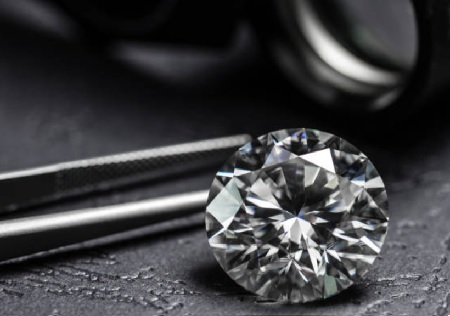Learn Lab Diamonds Cut: A Guide to Understanding the Process and Benefits

Lab-grown diamonds have gained immense popularity over the years, as they offer a more sustainable and ethical alternative to mined diamonds. As the demand for lab diamonds continues to grow, it is essential to understand the various factors that contribute to their quality. One of the most important aspects of a diamond is its cut, which can significantly affect its appearance and overall value. In this article, we will dive into the importance of the cut in lab diamonds, how lab diamonds are cut, and why you should learn about the lab diamond cut process.
Table of Contents
ToggleWhat is the Lab Diamond Cut?
When you learn about lab diamonds, one of the first things you’ll discover is that the “cut” refers not to the diamond’s shape, but to how well it has been crafted and shaped from the raw material. The cut of a diamond influences its brilliance, fire, and scintillation, which are the qualities that make a diamond sparkle. A well-cut diamond reflects light beautifully, creating a dazzling display of sparkle. The cut is often considered the most important of the “four Cs” (cut, color, clarity, and carat) in determining a diamond’s overall visual appeal.
How Are Lab Diamonds Cut?
The process to learn lab diamonds cut begins with a rough diamond, which is then carefully crafted and shaped into its final form by a skilled diamond cutter. Lab diamonds, like natural diamonds, are made from carbon atoms, but they are grown in a laboratory environment under controlled conditions, simulating the high-pressure and high-temperature conditions found in the Earth’s mantle. This controlled process results in diamonds with similar properties to mined diamonds, including the ability to be cut into various shapes like round, princess, oval, or cushion.
Once the diamond has been grown, the cutting process starts by assessing its rough form. A cutter must decide the best way to maximize the diamond’s size and quality while minimizing waste. For example, a rough diamond might have internal inclusions or imperfections that need to be carefully considered when determining how to cut it. Advanced technology, including lasers and scanning equipment, is often used to make precise measurements and cuts to achieve the desired result.
The Importance of the Cut in Lab Diamonds
When you learn lab made diamonds cut, you realize that the cut not only influences the diamond’s appearance but also its overall value. A diamond with an excellent cut will appear brighter and more vibrant because it reflects and refracts light more efficiently. On the other hand, a poorly cut diamond can look dull or lifeless, even if it has high color or clarity grades. The symmetry, proportions, and angles of the diamond all play a role in how it interacts with light, and thus how well it sparkles.
Additionally, the cut affects how the diamond’s shape is perceived. For example, a well-cut round diamond can appear larger and more brilliant than a similarly sized diamond with a less well-crafted cut. Therefore, when shopping for a lab diamond, understanding the cut can help you make a more informed decision and choose a diamond that suits your preferences for sparkle and visual appeal.
The 4 Cs and Their Relation to Lab Diamond Cut
To fully understand how the lab diamond cut affects the overall quality of a diamond, it is essential to consider the other three Cs: color, clarity, and carat. These elements work together to define a diamond’s overall quality, and the cut plays a significant role in bringing out the best features of the stone.
Color refers to the absence of color in a diamond, with the most valuable diamonds being colorless. Clarity refers to the presence of internal or external imperfections, called inclusions and blemishes. Carat refers to the weight of the diamond. While all of these factors are important when evaluating a diamond, learning lab diamonds cut and understanding how it enhances the diamond’s beauty can help you prioritize which quality factors matter most to you.
For example, a well-cut lab diamond with a lower color grade might still appear bright and sparkling due to its excellent cut. Alternatively, a high-color diamond with a poor cut might not look as impressive as a diamond with a lower color grade but a superior cut. Therefore, the cut is often seen as one of the most critical factors when considering a lab diamond’s overall beauty and value.
Why You Should Learn About Lab Diamond Cut
Learning lab diamonds cut is essential for anyone considering purchasing a lab-grown diamond, whether it’s for an engagement ring, a piece of fine jewelry, or simply as an investment. Since the cut directly influences the diamond’s appearance and brilliance, understanding its role can help you make a more informed and confident decision.
In addition to the visual appeal, the cut also impacts the price of a diamond. Diamonds with excellent cuts typically command higher prices because they display superior brilliance. By learning about the cut and how it affects the diamond’s sparkle, you will be able to appreciate the intricate details that go into creating a stunning diamond, making you a more savvy consumer when it comes to selecting a lab diamond.
Conclusion
In conclusion, understanding the lab diamond cut is a crucial part of making an informed decision when purchasing a diamond. Whether you are looking for the perfect engagement ring or adding a unique piece to your jewelry collection, the cut plays a significant role in how the diamond looks and how it performs under light. By learning lab diamonds cut, you can better appreciate the craftsmanship that goes into creating a beautiful and dazzling diamond, ensuring that you choose the best possible diamond for your needs and preferences.





